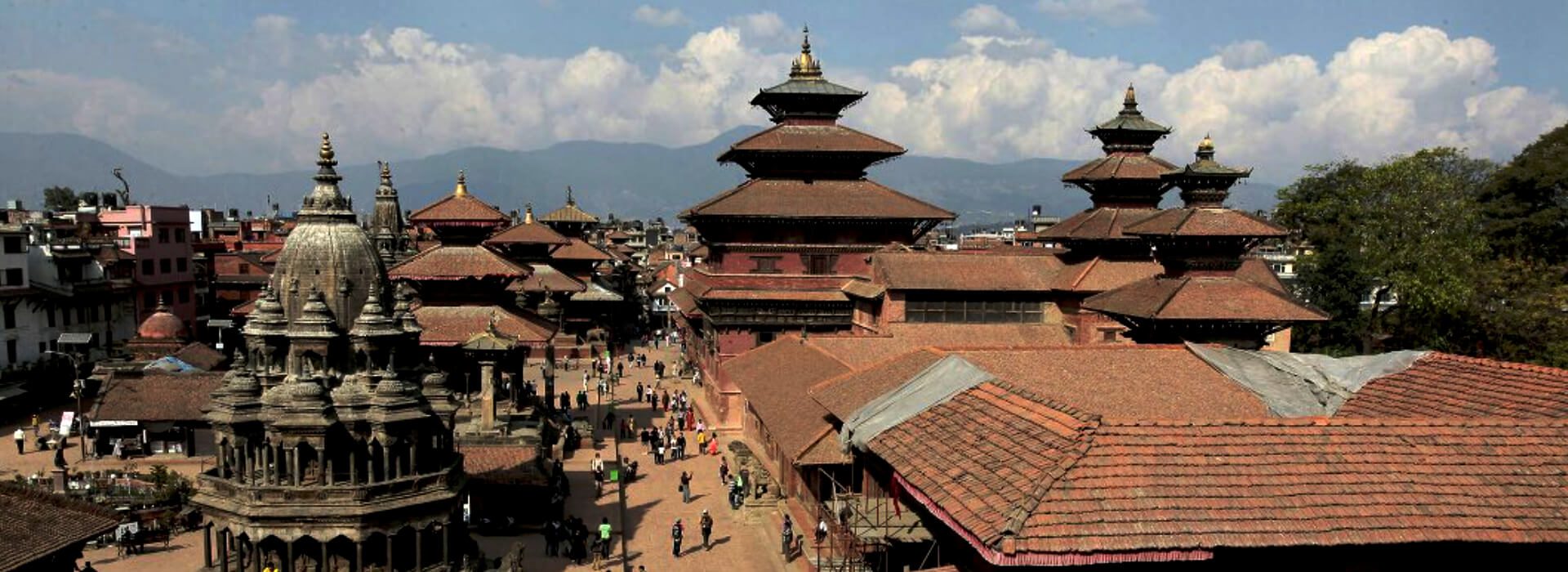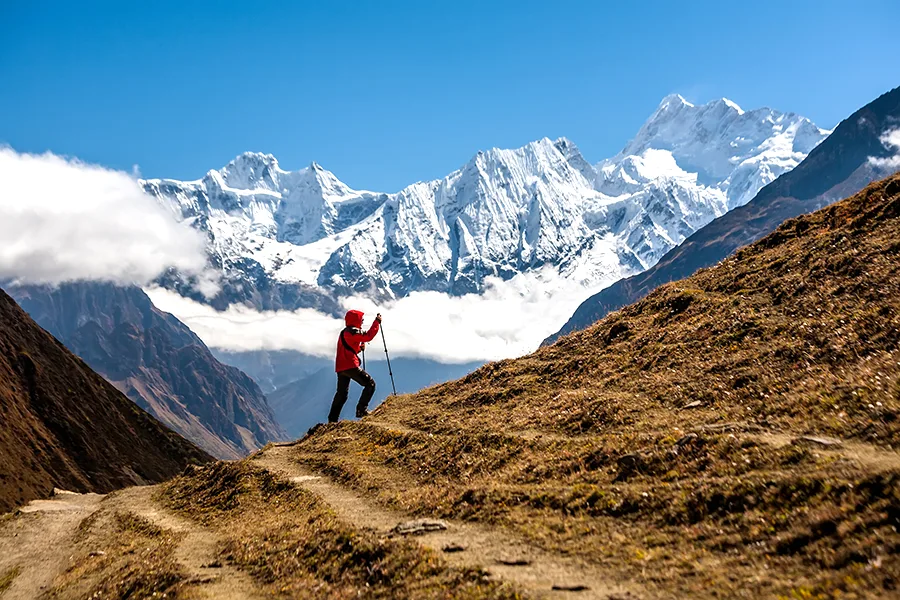Explore the Cultural Heritage of Nepal: Amazing Traditions and History
Nepal is a Himalayan country that lies between two nations – India and China. Nepal is famous for its long and varied cultural history since a long period. The cultural heritage of Nepal is a mix of old Hindu and Buddhist traditions since the time of Lichchavi Malla. Cultural Heritage of Nepal is a source of satisfaction for its people and tourists to explore its history.
Religion, in general Hinduism and Buddhism, performs a vital role in the Nepali lifestyle. The cultural heritage of Nepal extends past holy centers to its numerous ethnic businesses, every with its very own customs, language, and arts. Museums, cultural centers, and pictures to preserve the rich treasures of Nepal from the outside.
The Tharus of the Terai, the Gurungas of the hills, and the Sherpas of the Himalayas all make offerings to various Nepali ways of life. The cultural heritage of Nepal is not a wonder of religious culture and art however, it is expressed through old songs, dances, and fairs.
Instruments like the sarangi and madal are followed via colorful dances. Festivals like Holi, and Indra Jatra, with the Kumari Jatra and raised speech reflect the colourful spirit of the cultural heritage of Nepal. As Nepal moves towards modernity, trying to preserve and promote its cultural heritage is increasing.
Exploring Nepal’s Cultural Rich Tapestry: Top 12 Cultural Heritage of Nepal
Nepal is a country full of the Himalayas that presents cultural wonders. Let’s go through the top 12 cultural heritage of Nepal. This exciting journey explores the intricacy of Nepalese history, traditions, and arts. The cultural heritage of Nepal consists of old temples, palaces, and monuments that are proof of its wealth.
If we talk about places like Pashupatinath Temple or Bhaktapur Durbar Square, each place tells a unique story. Festivals like Dashain and Tihar add shade to the cultural history of Nepal and replicate the warmth and resilience of the people.
As we set out on this journey, prepare to explore a blend of spirituality, artwork, and tradition. This defines Nepal’s culture and invites tourists to engage with the past that spans hundreds of years and exceeds the barriers of territories.
1. Boudhanath Stupa
The Boudhanath Stupa is one of the best places for the Buddhist manner of lifestyle and spirituality. We also call it Baudha or Bodnath Stupa. This historic structure is a massive domed monument decorated with colorful prayer flags that flutter in the Himalayan breeze. Stupa is a bustling area where locals and tourists come to discover the cultural heritage of Nepal.
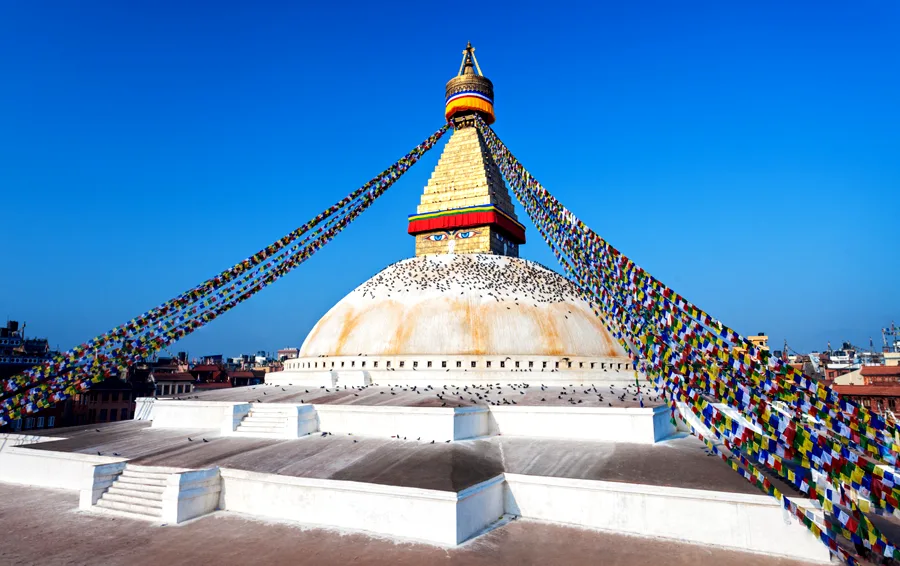
Built-in the 5th century, Boudhanath Stupa is one of the largest and most basic stupas (in other countries). His lower back is painted white and marks the watchful eyes of the Buddha, called the “All-Seeing Eye,” showing (by using a physical object to represent an idea or emotion) perception and (ability to do things very well).
Travelers (to holy places) and fans walk around the stupa, spinning prayer wheels and singing (words with secret powers/words or statements repeated often), developing a (like a steady drumbeat) roar that (shakes from a loud sound/makes a person feel strongly about something) with religious power.
It is not always the easiest non-(not part of the church) place for Buddhists, but it is good evidence of the deep historical and cultural history of Nepal and attracts tourists from all over the world. They come to know its peaceful beauty and discover its deep (related to religion or the soul) content.
2. Swayambhunath Stupa
This stupa is famous for the name of Monkey Temple, a lovely and ancient place in Nepal. It sits on a hill and appears over the Kathmandu Valley. The temple has a white dome and Buddha’s eyes on it. The location across the temple is calm and quiet, with masses of green plants.

Both Buddhists and Hindus find it crucial. If you visit, you may climb a steep staircase to the top. From there, you could see excellent views of the Kathmandu Valley and the far-off Himalayas. The temple has problematic carvings, prayer flags, and round discs that upload to the non-violent environment.
Swayambhunath is a manner to don’t forget Nepal’s lifestyle and records. It makes human beings reflect on consideration of the connection between religion, nature, and the beyond. The temple’s beauty and lasting nonsecular feeling make it a must-visit if you want to study Nepal’s rich culture.
3. Kathmandu Durbar Square
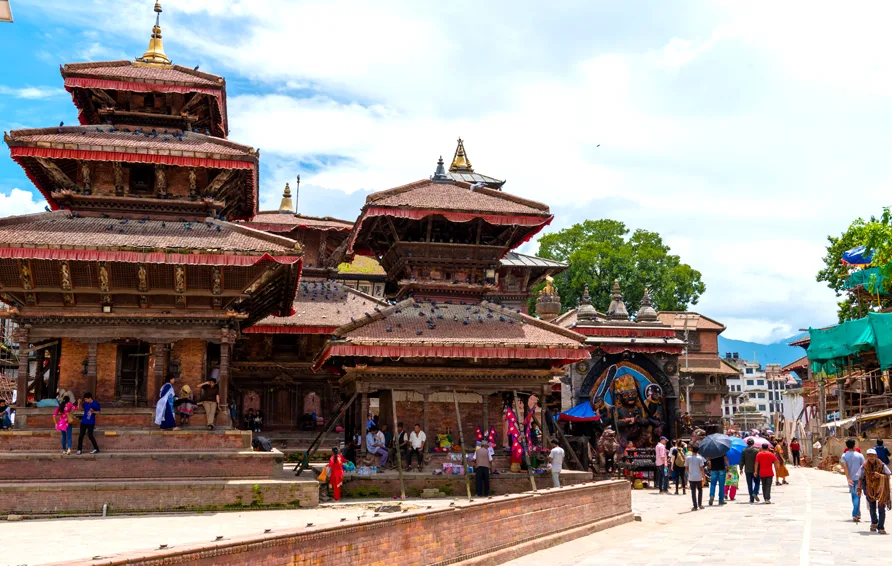
Kathmandu Durbar Square is in the busy capital of Nepal and is a cool place that shows off the cultural heritage of Nepal. Some people also call it Hanuman Dhoka Durbar Square. It’s surrounded by old palaces, big yards, and temples with amazing art and architecture.
This square used to be where the Malla kings and later the Shah dynasty lived. So, it’s really important in Nepal’s history. It’s like an awesome open-air museum with cool buildings and a lively atmosphere. People come right here to see Nepal’s cultural richness and royal history.
The location is so special that it’s diagnosed by UNESCO as a World Heritage Site. It’s like a meeting point for locals and visitors. You can see special buildings like Kumari Ghar, where the living goddess Kumari stays, and Taleju Temple, known for its beautifully carved wooden windows where they follow traditions.
4. Bhaktapur Durbar Square
Bhaktapur Durbar Square is in the middle of the old city of Bhaktapur and is a vital area that suggests Nepal’s records. It has special palaces, open areas, and temples that UNESCO thinks are cool. These buildings have traditional Newari architecture, making them look unique and interesting.
The former wrestling palace highlights the historical and religious significance of the city. Exploring this is like walking through a living museum. The fifty-five-window palace is known for its artistic domestic windows and arches, and the soaring 5-story Nyatapola temple presents medieval masterpieces.

The lively atmosphere of the square, busy streets, and neighborhood markets bring a dynamic detail to the cultural experience. Bhaktapur Durbar Square is not always just an organization of old homes; It is a lively place where traditions are celebrated with fairs, customs, and the talent of local artists.
This cultural heritage of Nepal welcomes visitors to the site to immerse themselves in the history and appreciate its enduring architectural beauty and the rich cultural and historical past of Bhaktapur.
5. Patan Durbar Square
Located inside the central heart of the historic town of Lalitpur (Patan), Patan Durbar Square is sort of a cultural heritage of Nepal with rich history and innovative knowledge. This UNESCO World Heritage Site is a captivating blend of palaces, courtyards, and temples, showing the awesome Newari structure that flourished within the Kathmandu Valley.
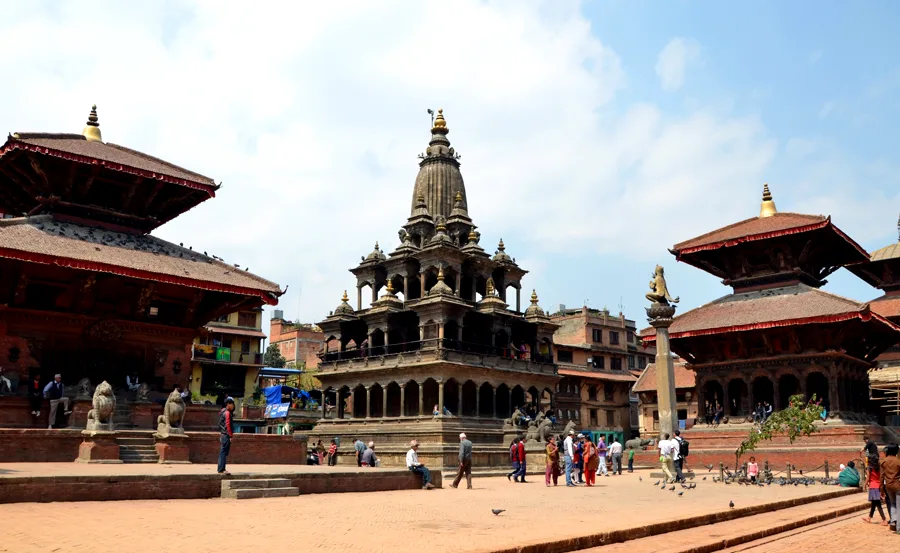
The square is a reminder of the metropolis’s cultural and architectural records. As you enter the Patan Durbar Square, you may be struck with the aid of using several splendor of structures similar to the Krishna Mandir, a lovely piece of stone structure, and the Patan Museum, which is domestic to a rare collection of historic artifacts.
The rectangle’s timeless appeal is complemented by the energetic markets and busy roads around it. Local fairs and spiritual ceremonies bring power to the square, preserving and celebrating traditions.
Patan Durbar Square encourages people to immerse themselves in the cultural richness of Nepal, and appreciate the art, records, and traditions that have created this website with an engaging background.
6. Pashupatinath Temple
Pashupatinath Temple is a really important place in Kathmandu, Nepal, by the Bagmati River. It’s a special site for both culture and religion. People built this temple for Lord Shiva, and it’s one of the holiest Hindu places in the whole world. UNESCO even calls it a World Heritage Site.

Around the temple, there are many smaller shrines, open spaces, and places for bathing where people do religious rituals. The main temple looks unique with its pagoda-style design and silver doors. It’s a symbol of deep faith and really old craftsmanship.
People from all over the world, including devotees, holy men called Sadhus, and tourists, come to see the special ceremonies at Pashupatinath Temple. The Bagmati River next to the temple is thought to be a special place for departed souls. The nearby Pashupatinath forest is considered a peaceful spot for thinking and spiritual reflection.
This temple, with its religious background, beautiful design, and cultural practices, shows Nepal’s long history of spirituality. It brings people together to share and enjoy their common beliefs.
7. Changunarayan Temple
Changunarayan Temple is on a hill close to Bhaktapur in Nepal. It’s a unique region full of the cultural heritage of Nepal and is important for both religious and historical reasons. This old Hindu temple is for Lord Vishnu and is probably one of the oldest Hindu temples still in use inside the Kathmandu Valley.
The temple is fashioned like a pagoda, and the timber elements have cool carvings showing testimonies from Hindu myths. Skilled artists from ancient times made these carvings. The temple not only shows off Nepal’s building skills but also teaches about their culture and religion.
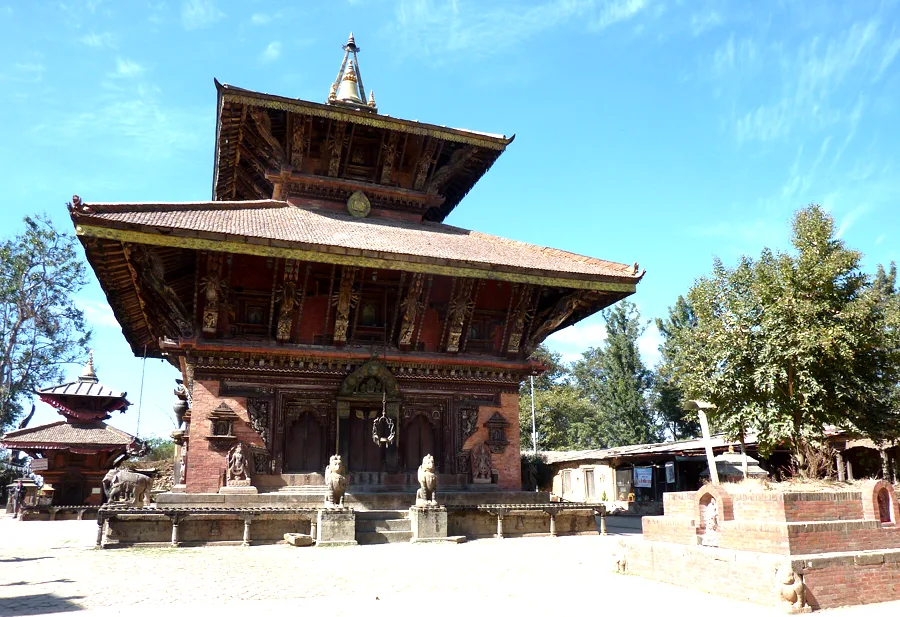
People, including pilgrims and visitors, climb stone steps with statues of mythical creatures to get to the special shrine. Inside the temple courtyard, there are writings on stones from a really long time ago, telling us about Nepal’s history.
Changunarayan Temple is in a calm and green place, making it great for thinking about religion, admiring culture, and showing respect for the cultural heritage of Nepal. It’s like an invitation for people to learn about Nepal’s rich and diverse traditions.
8. Lumbini – the birthplace of Gautam Buddha
Lumbini is a critical cultural heritage of Nepal and lies in the southwest of Nepal. It’s famous for Siddhartha Gautama, who later became Lord Buddha. People from all around the globe, especially Buddhists, come here on a unique pilgrimage. It’s identified via UNESCO as a World Heritage Site.
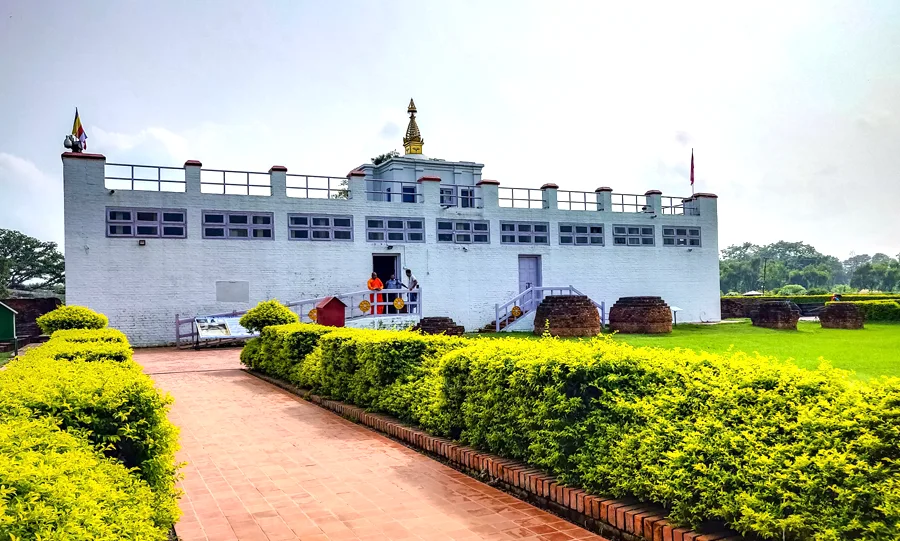
In Lumbini’s sacred lawn, there is a temple referred to as Maya Devi Temple, where Queen Maya is believed to have given start to Prince Siddharth beneath a special tree. There’s also the Ashoka Pillar, positioned by Emperor Ashoka a completely long time in the past, showing the lessons of Buddha.
Lumbini is sort of a calm and non-violent vicinity wherein humans go to discover non-secular peace and find out about Lord Buddha’s existence. There are monasteries, meditation spots, and a museum with things from specific Buddhist traditions.
People, including pilgrims and tourists, walk around the quiet area, thinking about the ideas of peace and understanding that Buddha talked about. Lumbini shows that Nepal cares about keeping and sharing the deep history of Buddhism with the world.
9. Janaki Mandir
Located within the bustling city of Janakpur in southern Nepal, the Janaki Temple is a complete-fledged cultural heritage of Nepal deeply intertwined with spiritual records. Dedicated to Goddess Sita, the temple may be very crucial in Hindu mythology as it’s far believed to be the birthplace of Sita, the spouse of Lord Rama.

Pilgrims and devotees come from all over Nepal and India to go to this sacred place, pay their respects to Goddess Sita, and try to find blessings for a glad and harmonious lifestyle. The structure of the temple reflects a mixture of cultural influences, offering particular carvings, colorful works of art, and a unique pagoda style.
The annual Vivah Panchami festival, which celebrates the marriage of Lord Rama and Goddess Sita, draws a massive variety of devotees who participate in active processions and spiritual rituals. A Janaki temple isn’t constantly simply an area of worship; moreover, it serves as a cultural center and maintains a various tapestry of Hindu mythology and traditions.
With its historical and non-secular significance, the Janaki Temple is a symbol of devotion and cultural background, weaving together the threads of mythology and spirituality in the colorful fabric of Nepal.
10. Tengboche Monastery
Tengboche Monastery is a special place high up in the Himalayas, 3,867 meters above sea level, in Nepal. It has fantastic views of Mount Everest, and many Tibetan Buddhists visit. The Sherpas, who live here, see this monastery as really important for their culture and religion. They come here to worship, meditate, and remember their history.

The monastery looks like a wonder with its traditional Tibetan style and pretty decorations, set against the beautiful Himalayan scenery. People who visit might see daily rituals, prayer ceremonies, and the exciting Mani Rimdu festival that attracts believers and spectators from far away.
This monastery is not just a peaceful place for spirituality, but it’s also like a museum showing the mix of Tibetan Buddhism and the special way Sherpas live. It’s a calm spot with cultural importance, making it a great place to visit and adding to the unique cultures found in Nepal’s mountains.
11. Manakamana Temple
Located on a lush hill in the Gorkha district of Nepal, Manakamana Temple is an extremely respected cultural heritage of Nepal and a secular vacation spot. Dedicated to Hindu Goddess Bhagwati, the temple is loved with the help of every pilgrim and visitor.
The Manakamana Temple is a special place you can reach by a cool cable car on a steep hill. It’s not just for praying but also to show Nepal’s history and traditions. The temple has been here for a long time, and its name, ‘Manakamana,’ means fulfilling the heart’s desires.

People who visit the temple believe the goddess there can make their wishes come true. The area around the temple has awesome views of the Himalayan mountains and the Trisuli River valley, making the religious journey even more special for the visitors.
The Manakamana Temple is important because of its history, religious events, and beautiful surroundings. It’s like a special place from the old times that attracts people from different backgrounds. They come here to ask for blessings and experience the unique culture of Nepal.
12. RaniPokhari
Rani Pokhari, which means ‘Queen’s Pond,’ is an old and special place in the middle of Kathmandu, Nepal. It was made in the 17th century by King Pratap Malla to remember his late queen. The pond is a calm and pretty spot with a nice temple for Lord Shiva.

In the pond’s water, there’s a special thing called a Shiva lingam, making the place important for religion. The way Rani Pokhari looks shows off the rich cultural heritage of Nepal. It has a tall nine-story building with cool carvings.
People, both from Nepal and other places, come here to walk around the pond and show respect to the temple. Every year, there’s a festival called Chhath which people celebrate at Rani Pokhari. They pray and put lamps in the pond.
Even though there are some problems and they are fixing things, Rani Pokhari is still a symbol of Nepal’s old history and culture. It’s like a quiet and peaceful place in a busy city.
Frequently Asked Questions
1. What makes the cultural heritage of Nepal special?
The cultural heritage of Nepal is famous for its mix of antique traditions, art, homes, and religious practices that come from Hindu and Buddhist impacts.
2. Which unique places in Nepal are diagnosed via UNESCO?
Nepal has some locations diagnosed by using UNESCO, like the Durbar Squares within the Kathmandu Valley, Swayambhunath Stupa, Pashupatinath Temple, and Lumbini, where Lord Buddha was born.
3. Why are festivals a big deal in Nepal?
Festivals are a massive deal in Nepal. They’re active celebrations of religious and cultural occasions, like Dashain and Tihar. They convey people collectively and keep traditions alive.
4. Why are Nepali buildings important in their history?
The old buildings in Nepal, with detailed wood carvings and unique pagoda-style designs, are crucial to their cultural history. They show off the skills of local craftsmen.
5. Why is Mount Everest part of Nepal’s old culture?
Mount Everest, the tallest mountain globally, is linked to Nepal’s tradition. The Sherpas, who are from here, have a special culture tied to mountaineering mountains and the Himalayas.
6. How does Nepalese food add to their culture?
The food in Nepal, with its different tastes influenced by India and Tibet, is a big part of their culture. Dishes like Dal Bhat, momo, and regional foods show off their diverse cooking.
7. What’s the role of music and dance in Nepali culture?
Traditional music and dance are super important in Nepal. People perform them during festivals and celebrations. Instruments like the madal and dances like Tamang Selo add color to their culture.
8. How did the Gorkha Regiment impact Nepal’s culture?
The Gorkha Regiment, known for being brave and loyal, made a big mark on Nepalese and Indian military history. Their influence is seen in rituals, festivals, and the popularity of the khukuri knife.
9. Why are Thangka paintings special in Nepal?
Thangka paintings, detailed religious artworks that show gods and patterns, are a big part of Nepalese culture. People use them in rituals, ceremonies, and as a way to tell stories visually.
10. What’s unique about the Kumari Living Goddess in Nepal?
The Kumari, a young girl chosen as a living goddess in Kathmandu, is a special tradition. Her role in religious events and festivals shows the strong spiritual beliefs of the Nepalese people.
The Final Wrap Up
The cultural heritage of Nepal is sort of a unique series that indicates the numerous testimonies of its history and traditions. We have a sort of massive museum with antique temples, lovely palaces, and lively celebrations, all keeping the customs and beliefs of different times alive.
The shiny garments, happy songs, and engaging meals all together make Nepal’s way of life numerous and precise. Saving and playing with this cultural history is not the most effective something that makes Nepal proud. But it is also a manner to make sure that the special testimonies of Nepal are retained to make humans glad in the long term.
Think of the cultural heritage of Nepal as a massive, colorful picture made up of many portions. Each piece, like the distinctive home windows in Kathmandu Durbar Square or the amusing dances at festivals, tells a distinct part of the story.
All this stuff adds up to make Nepal’s subculture energetic and non-violent. As Nepal moves forward, it’s essential to preserve and take care of its cultural background. This facilitates maintaining a strong experience of who we are and makes sure that our roots live sturdy and related.



